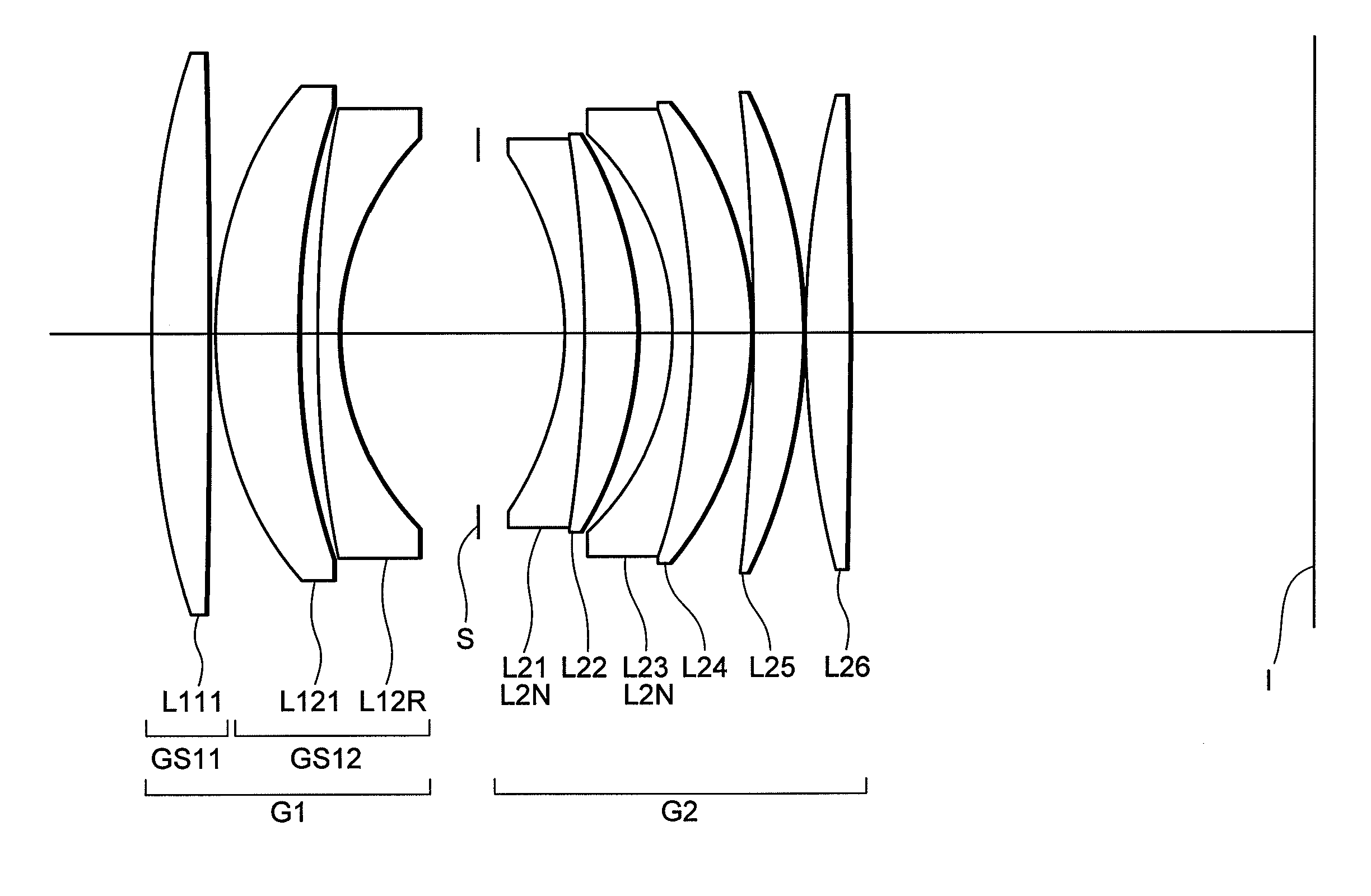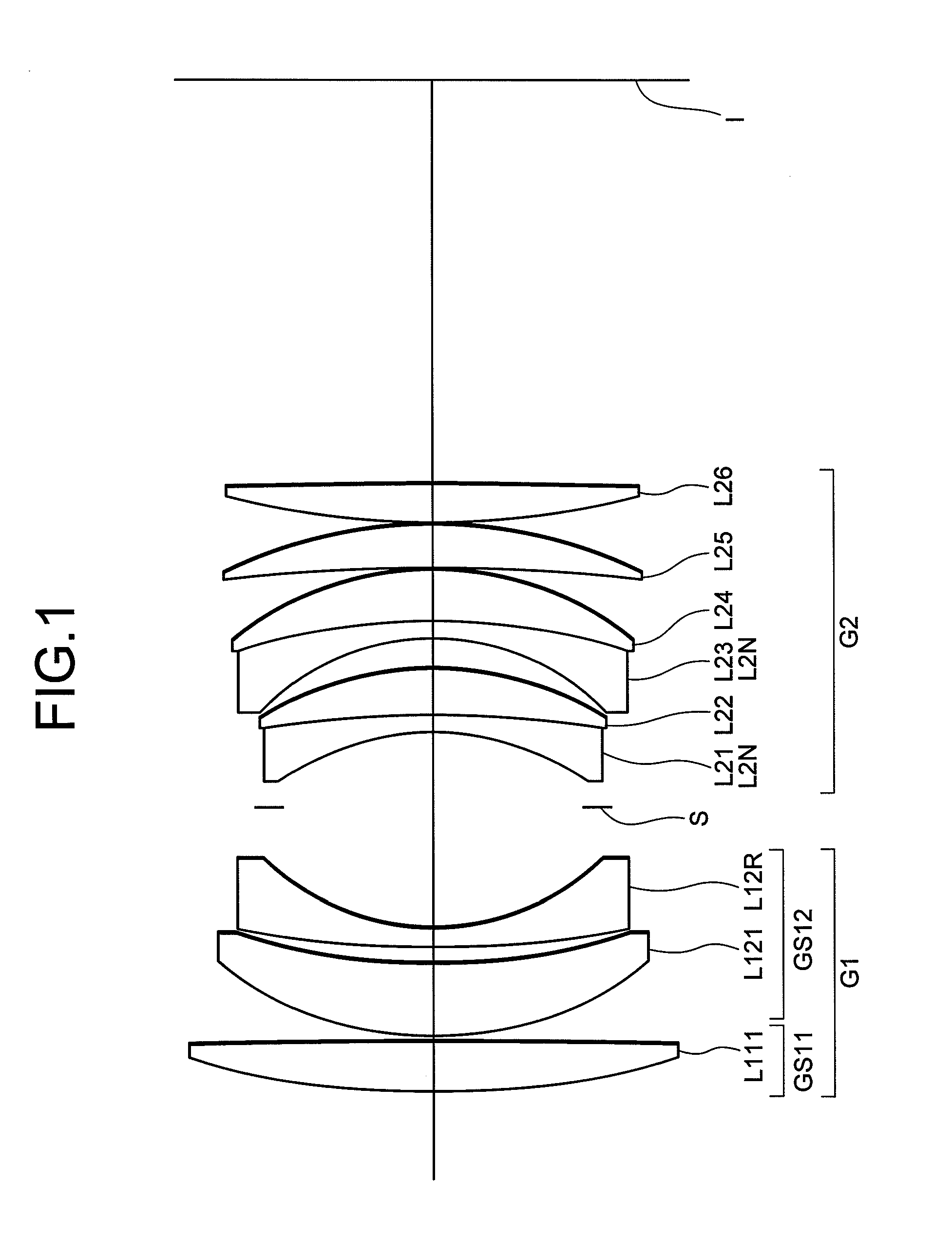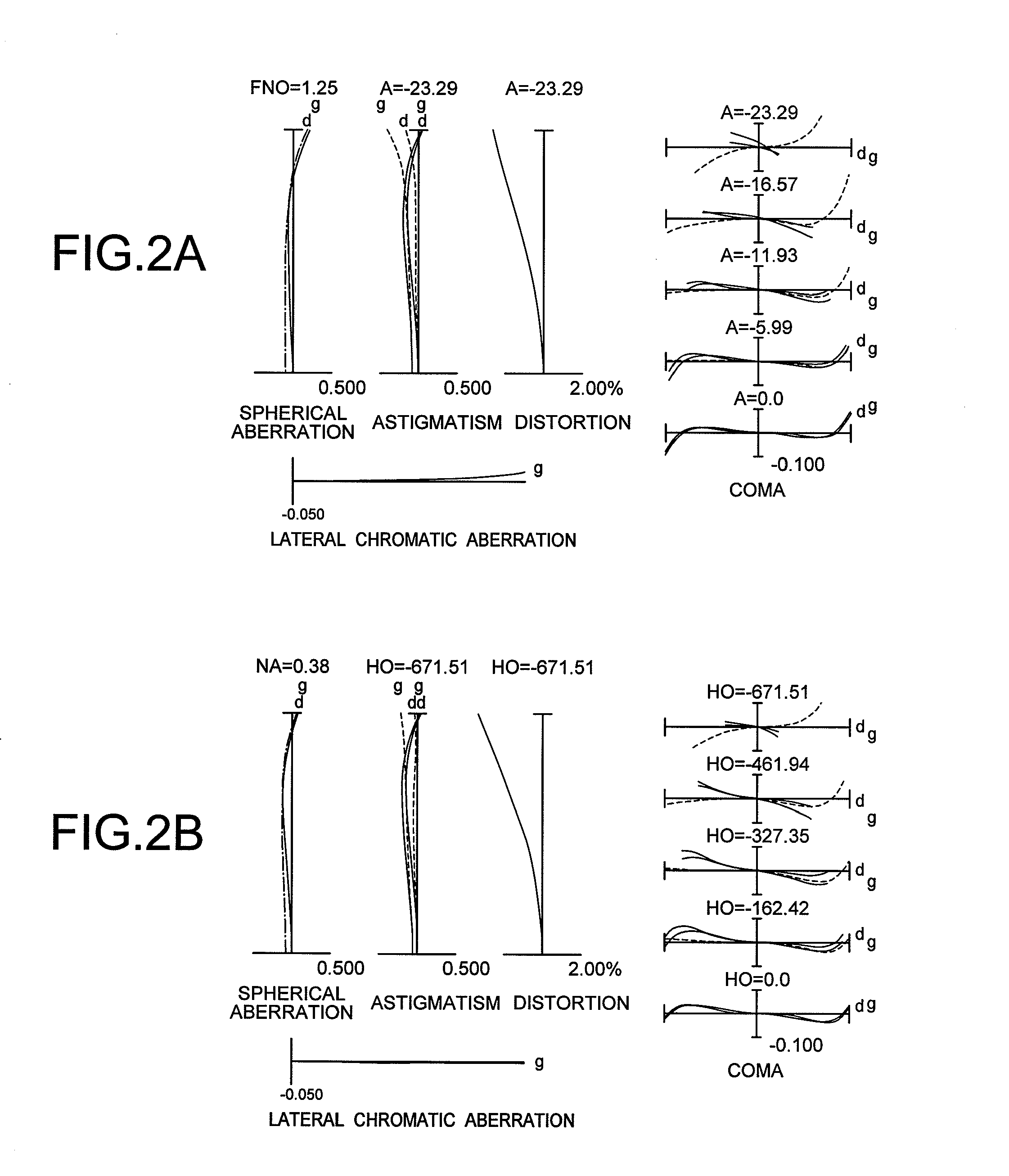Lens system and optical apparatus
- Summary
- Abstract
- Description
- Claims
- Application Information
AI Technical Summary
Benefits of technology
Problems solved by technology
Method used
Image
Examples
example 1
[0152]FIG. 1 is a sectional view showing a lens configuration of a lens system according to Example 1.
[0153]The lens system according to Example 1 is composed of, in order from an object side along an optical axis, a first lens group G1 having positive refractive power, and a second lens group G2 having positive refractive power. An aperture stop S is disposed between the first lens group G1 and the second lens group G2.
[0154]The first lens group G1 is composed of, in order from the object side along the optical axis, a sub-lens group GS11 having positive refractive power, which is constructed by a positive meniscus lens L111 having a convex surface facing the object side with stronger refractive power than an image side surface, and a sub-lens group GS12 having negative refractive power, which is constructed by a positive meniscus lens L121 having a convex surface facing the object side with stronger refractive power than the image side surface and a negative meniscus lens L12R hav...
example 2
[0166]FIG. 4 is a sectional view showing a lens configuration of a lens system according to Example 2.
[0167]The lens system according to Example 2 is composed of, in order from an object side along an optical axis, a first lens group G1 having positive refractive power, and a second lens group G2 having positive refractive power. An aperture stop S is disposed between the first lens group G1 and the second lens group G2.
[0168]The first lens group G1 is composed of, in order from the object side along the optical axis, a sub-lens group GS11 having positive refractive power, which is constructed by a positive meniscus lens L111 having a convex surface facing the object side with stronger refractive power than an image side surface, and a sub-lens group GS12 having negative refractive power, which is constructed by a positive meniscus lens L121 having a convex surface facing the object side with stronger refractive power than the image side surface and a negative meniscus lens L12R hav...
example 3
[0175]FIG. 6 is a sectional view showing a lens configuration of a lens system according to Example 3.
[0176]The lens system according to Example 3 is composed of, in order from an object side along an optical axis, a first lens group G1 having positive refractive power, and a second lens group G2 having positive refractive power. An aperture stop S is disposed between the first lens group G1 and the second lens group G2.
[0177]The first lens group G1 is composed of, in order from the object side along the optical axis, a sub-lens group GS11 having positive refractive power, which is constructed by a positive meniscus lens L111 having a convex surface facing the object side with stronger refractive power than an image side surface, and a sub-lens group GS12 having negative refractive power, which is constructed by a positive meniscus lens L121 having a convex surface facing the object side with stronger refractive power than the image side surface and a negative meniscus lens L12R hav...
PUM
| Property | Measurement | Unit |
|---|---|---|
| Volume | aaaaa | aaaaa |
| Volume | aaaaa | aaaaa |
| Power | aaaaa | aaaaa |
Abstract
Description
Claims
Application Information
 Login to View More
Login to View More - R&D
- Intellectual Property
- Life Sciences
- Materials
- Tech Scout
- Unparalleled Data Quality
- Higher Quality Content
- 60% Fewer Hallucinations
Browse by: Latest US Patents, China's latest patents, Technical Efficacy Thesaurus, Application Domain, Technology Topic, Popular Technical Reports.
© 2025 PatSnap. All rights reserved.Legal|Privacy policy|Modern Slavery Act Transparency Statement|Sitemap|About US| Contact US: help@patsnap.com



